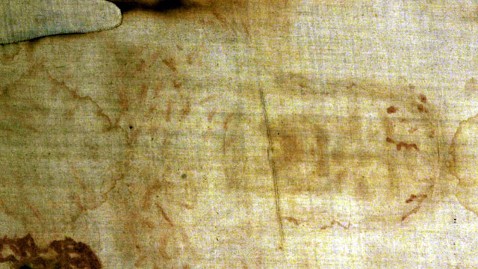The Shroud of Turin Wasn't Faked, Italian Experts Say

Antonio Calanni/AP Photo
Has the authenticity of the Shroud of Turin finally been proven?
A new study by Italian scientists may not be definitive on its origins, but it does refute the popular notion that it was faked during the Middle Ages.
Experts at Italy's National Agency for New Technologies, Energy and Sustainable Development have concluded in a report that the famed purported burial cloth of Jesus Christ could not have been faked.
According to the Vatican Insider, a project by La Stampa newspaper that closely follows the Catholic church, the experts' report says, "The double image (front and back) of a scourged and crucified man, barely visible on the linen cloth of the Shroud of Turin has many physical and chemical characteristics that are so particular that the staining which is identical in all its facets, would be impossible to obtain today in a laboratory … This inability to repeat (and therefore falsify) the image on the Shroud makes it impossible to formulate a reliable hypothesis on how the impression was made."
The centuries-old shroud contains a faint impression of the front and back of a human body, along with blood, dirt and water stains from age.
Many have long questioned the shroud's authenticity, and others have suggested that it was faked during medieval times.
The Italian researchers, who conducted dozens of hours of tests with X-rays and ultraviolet lights, said that no laser existed to date that could replicate the singular nature of markings on the shroud. They also said that the kind of markings on the cloth could not have come from direct contact of the body with the linen.
Previous investigation has determined the markings could not have come from pigments or dyes.
The Italian scientists said the marks could only have been made by "a short and intense burst of VUV directional radiation."
Such technology did not exist in the time the skeptics claim the shroud could have been forged.
The scientists haven't offered an explanation for how they believe the marks were made, but believers have long thought the shroud was miraculously marked when Jesus rose from the dead following his crucifixion.
The mystery of the shroud has long been a subject of debate and serious research.
Just last year, the History Channel aired a special in which it revealed a 3D image of the face of Jesus, constructed from the markings left in the cloth. Artists and scientists studied the Shroud of Turin, and used cutting-edge technology to create a computer-generated image of the face surrounded by the shroud.
The revelation caused mixed reactions around the globe. While some people said the image was "realistic" and what they imagined Christ looked like, others were not as certain.
The shroud is owned by the Vatican, although the Catholic church has never taken an official position on the cloth's authenticity.